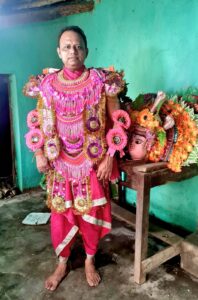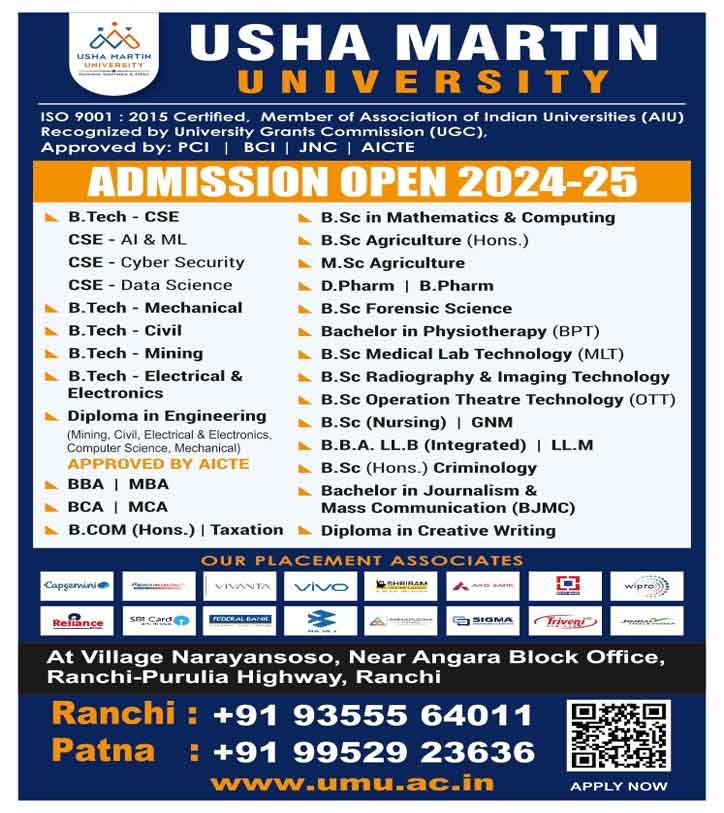SHUBHASISH CHAKRABORTY
“तमसो मा ज्योतिर्गमय”
“Lead me from darkness into the light”
These words from the Upanishads resonated deeply as I stepped onto the stage with the children of Pandadih for our Chhau dance performance. The journey here wasn’t just about mastering the movements of this magnificent tribal art form – to me, it became a challenge to the spirit of human resilience.
I am a social scientist who adopted Pandadih village a decade ago. I am also a writer and filmmaker, having spoken at the United Nations headquarters on two occasions. I am currently employed at the global conglomerate, and despite my job commitments, I make it a point to visit Pandadih every two months, using my salary to fund various important initiatives.
I have identified Chhau masters and, for the past five years, have been diligently organizing classes for children in these villages in collaboration with them.

When I was recovering from my injury and could barely walk, I would still try to dance, but I often stumbled. I would sit quietly and think about Chhau. For me, this was not just about fulfilling a promise; it was also an expression of the affection I have for the children of Pandadih, who have embraced me as family.
About five years ago, when I began searching for Chhau masters to teach in several schools in the Sonahatu block, I had no idea that I would become a Chhau dancer at the age of 47. When I talk about ‘Individual Social Responsibility,’ it isn’t just a concept; it’s a thread that leads to success. During the journey of transformation in Pandadih, I realized that these children became my strength, and their energy illuminated my path during difficult times. My journey from injury to completing this performance became my personal battle of धर्म (dharma) – not just to fulfil a promise to myself, but to the amazing children and people of Pandadih, who’ve become family over the past decade.”
The Chhau dance, with its martial arts movements and mythological storytelling, taught me that our bodies are vessels of ancient wisdom. Every practice session, despite the pain, became a meditation – a reminder that “शरीरमाद्यं खलु धर्म साधनम्” (The body is indeed the primary instrument of dharma).
This performance wasn’t just about completing a goal for Shubhasish – it was about embracing cultural heritage, overcoming personal limitations, and remembering that every one of us has the power to be a light in someone’s life.

Inspired by Shubhasish’s efforts, the young Chhau artists and other children in the village have come together to establish a medicinal plant garden, contributing to a cleaner environment. The children visit the garden to gather information about the plants, which they then share with their families, educating them about the plants’ benefits. There is also a library in the village that houses a wide variety of books, ranging from textbooks to stories and poetry. Children regularly visit this library to study and enhance their learning experience.


